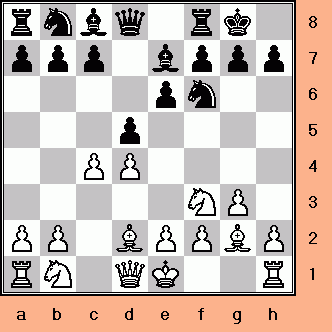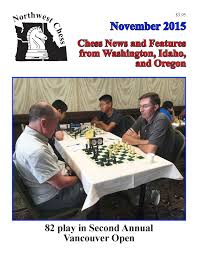
Playing the Catalan: 6...dxc4 and Anshul's idea
Photo robbed from Google (who else)
Last night I decided to log into live chess, and to my amazement KingSacrifice (Real name hidden for security purposes) was only. After we chatted for a while, another player we knew, anshulcim2 (Real name hidden) also came online. They both play for the same high school, Orangemond, and after talking about ways to shut down their chess club so they could play for a better team (real name hidden, again), we started to talk about opening theory. First, I showed a crazy line in the Caro Kann. But anshulcim2 was bored, and wanted to review an opening we all play, the Catalan.
The Catalan, thanks to KingSacrifice, has become one of the most popular openings in the Seattle area. I complained about it being so good that it makes chess unfair, and with more and more victims, that start playing it, it is getting more and more popular. Many opponents, (after 1.d4 Nf6 2.c4 e6) when seeing 3.g3 instead of 3.Nc3 or 3.Nf3, start to cry, and some occasionally resign. The effectiveness of the system can not be underrated!
So when Anshul and KingSacrifice played each other in a tournament game, they knew a tense battle would arise in the Catalan opening. Anshul had prepared a novelty, and so scared was KingSacrifice, that he deviated from his own preparation! They did a Grandmaster draw, and afterword Anshul showed his line.
We looked at it yesterday, and I was convinced that it was really bad. So, I'm going to show how to play the White side of the Catalan after its most popular response, 6...dxc4, and refute Anshul's idea as well.
For those of you who don't know what we are talking about (all normal people who don't study chess their whole life), here is a helpful starting point:
Typical ideas:
White
1. Restrict all counterplay by Black. This is a key idea in the Catalan. White hopes to get a position where he is playing for two results (obviously! Why would White play for a loss!), and if Black is not able to do anything you can count on him selfdestructing, especially if he is playing me.
2. Play a5. If White gets to play a5 and Black doesn't have a good way to meet it, he should be happy. The maneuver Nb8-d7-b6 no longer works, Black can not play Na6, and Black is prevented from playing a5, which secures the b4-square for him. This is why in so many variations, Black plays a5 quickly, in fact the main move is 10...a5.
3. Control the c-file. This is a general idea in the Queen's Gambit. Since the c-file is the most likely to be opened in this position, it is usually nice to play Rac1, and the other rook on d1 or e1, depending on the position.
4. Playing e4. This is another common idea in the Queen's Gambit. If White can achieve this, he will have a big space advantage and can try to smother Black and make him feel hopeless. Remember, it's not all about the moves, it's also about intimidation.
5. When Black plays Nd5, do not trade the bishop for the knight. If Black is able to get rid of the dark squared bishop, it will be a success for him. Don't let this happen unless there is a concrete way to secure an advantage.
6. Prevent your opponent from using an engine. If your opponent gets Stockfish, their drawing chances increase immensely. Thus, make sure they never leave the tournament area, and rob their phone before the game.
Black
1. Play a5. I've explained why above. If Black doesn't play it himself, White can do it and make his position even more passive
2. Trade pieces (generally). Usually trading pieces will help black since he has less space, however, what makes it so hard for him is that there are so many exceptions. Sometimes "threatening" a queen trade is good, but other times White's advantage will still remain in the endgame. If he is able to trade his knight for a bishop that would be a big success.
3. Try to avoid passivity. This is obvious, but Black needs to remind himself of this. If he plays one waiting move, he could find all his hopes for play disappear, and find himself strategically lost.
4. Sneak an engine into the playing site. Your opponent will try to prevent this threat, but it is the only way to draw. Without an engine you are almost hopeless.
A) 10...Nbd7
B) 10...Bd6
C) The main line 10...a5
D) Anshul's Line: 10...Nd5
So, do you have a way to save your line Anshul? I'm not saying 6...dxc4 is bad for Black, (it's probably a forced draw, like every opening) but it seems easier for White to find ideas in these lines, and as usual, should promise White better practical chances. But I think Anshul's idea of 12...f5 is just too risky, there's no way he (or his engine) can get away with it!
Feel free to praise me in the comments below

